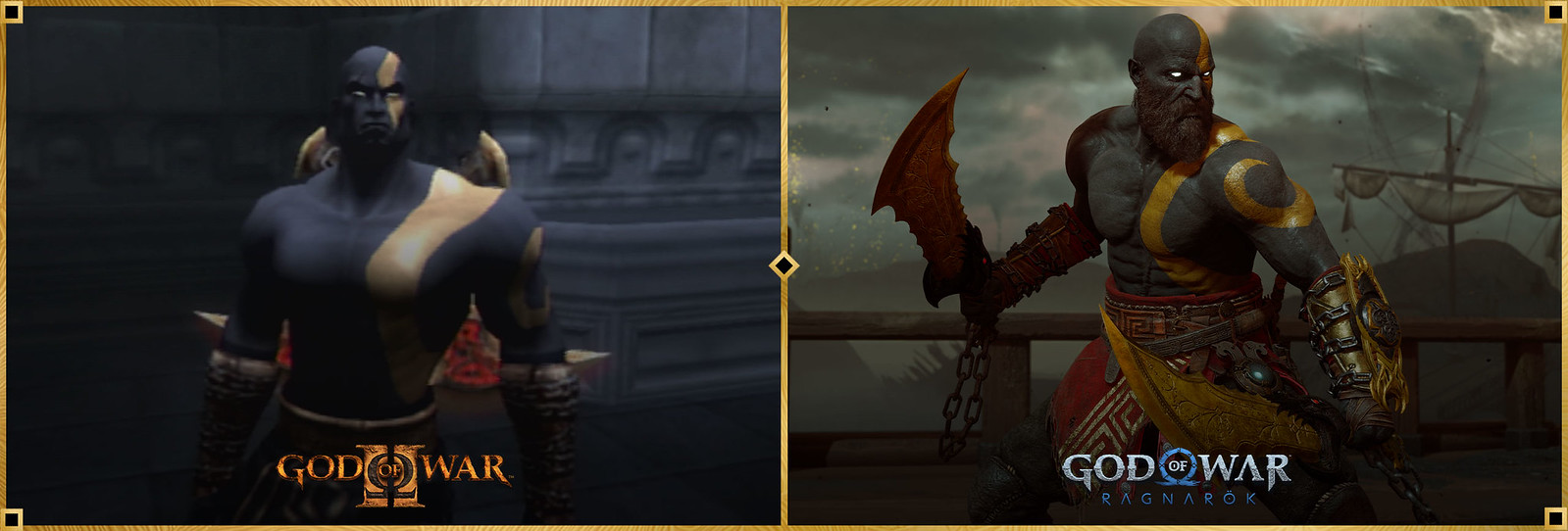Indie games are known for their daring and often groundbreaking approaches to visuals and storytelling. Ultros is a new indie title coming to PS4 and PS5 on February 13. The game is a twisted, time-looping sci-fi adventure. It’s packed with high-stakes action, clever twists on classic game design ideas, intriguing, and often unsettling environmental storytelling, and crazy-colorful pop-psychedelic visuals that makes you wonder if the game came with its own built-in blacklight.
This eye- and mind-dazzling adventure comes to PlayStation courtesy of Sweden-based developer Hadoque. It tells the story of a spacefarer trapped in a nightmare time-cycle within a bizarre, seemingly demonic black-hole acting as a womb for an unspeakable cosmic horror–the titular Ultros.
In the words of game director Mårten Brüggeman, “It’s a psychedelic sci-fi platforming adventure, a combat- and gardening-driven experience. It also asks a lot of existential questions if you dive into it, as you explore the sarcophagus spaceship and try to understand what it is a metaphor for and what is dwelling inside.”
Fight or foster
Ultros is fundamentally a search-action game where you explore an ever-expanding map that opens up further and further as you acquire more abilities for navigation and combat. It’s a popular indie game genre, and Ultros expands on it with some unique gameplay twists centered around the ideas of karmic cycles: creation and destruction, nurture and killing.
“It’s a game about choices,” explains Brüggeman, “where you can choose to play in a destructive or constructive way, and the choices you make change your interpretation of your in-game actions.”
The environment oozes with otherworldly threats, requiring skillful combat to neutralize the assorted hostile lifeforms. Variety is a big emphasis here. Ultros encourages you to use a diverse arsenal of moves in fun and creative ways to dispatch foes: dodge-and-strike attacks, jumping strikes, and even launching foes into the air to turn them into a living projectile weapon.
“We want to combat to feel intimate and visceral to emphasize destruction, ruining the balance of disruption and construction within the current cycle. We focused on movements, forcing you to be near them to fight them are integral to what we wanted to do, the intensity and intimacy of one-on-one combat.”
As your foes fall before you, they drop all manner of edible offal–which varies in quality depending on how skillful your killing blow was. Eating these remains isn’t just a health restore: it provides you with valuable nutrients, which allow you to access skill tree upgrades at save pods, which enhance your movement, fighting, and navigational abilities.
But if eating mystery meat makes you feel a bit queasy, there’s another way to obtain sustenance: raising the seeds you find scattered around in gardens, then partaking of that plant’s fruit. Aiding you in your horticultural pursuits is your Extractor, a special device that gains numerous abilities throughout the game.
The plants that grow over time will leave behind assorted benefits, like creating platforms to alternate routes and making planning and tending to your gardens an essential part of gameplay. Brüggeman elaborates: “The seeds all have different abilities and rules of how they grow. Part of beginning your garden is getting to know how these different plants work and how they affect each other and the world around them.”
Brüggeman continues. “With these in-game resources, you can eat everything you find, and it builds up your nutrition, like an experience point system. But it’s also the economy of how the game ecosystem works. When you take something from a plant, you’re sort of stealing from it. But you can give back by planting seeds. When you kill creatures like a typical game hero, you steal both their life and from the ecosystem. We wanted to give a choice in our game not to be that kind of hero.”
Oh, yes, there’s one more critical element to gardens: they stick around even when a time loop wipes everything and sends you back to square one.
Let’s do the time warp again
Yes, Ultros is a game built around a time loop, and there’s only so much you can do before you’re forced to begin anew. You may have been fortunate to keep a few skills from the previous loop. But more importantly, you’ve got the knowledge you gained from your last attempt. And hey, those plants you took care of? You might be surprised to see what’s become of them.
“One of the core concepts we’ve built the game around is the philosophy of a karmic cycle: What you do in one life makes up what your next life will become. In this game, we have a time loop mechanic that is the rebirth of our character and world. So, one of the major choices you can make in the game is whether or not you nurture the world you’re in. If you build it up, the garden becomes a part of the world you’re inhabiting, and tending to these plants is the way you can make the game world evolve.”
The presence of player choice among these time cycles hints at multiple conclusions to Ultros’s story. When I asked Brüggeman about it, he said, “There are multiple endings, I can say that much. The time loop is more story-driven than mechanics-driven, so you can explore a ‘what if I do this instead’ scenario, also tying into the philosophy of a karmic cycle. We want players to re-experience events and scenarios but get to see them from different perspectives. You’re given the chance to make the choice again, but from another perspective.”
A whirling universe of color
The game’s trademark art style comes from art designer El Huervo, who is well-known for his work on the classic indie series Hotline Miami. The visuals are packed with contrasts, both in color and in theming: in one area, you’ll be surrounded by an environment teeming with goopy, pulsating viscera-like growths, yet only a ways away, you’ll discover a place that looks not unlike an elegant European cathedral.
“I would describe Ultros’s art style as a Renaissance painting meets comics meets Jackson Pollock,” says Brüggeman. “El Huervo’s style has developed over the years. He’s very inspired by French artist Moebius, but also German zoology scholar and artist Ernst Haeckel.”
The visuals also play a big part in the story and atmosphere. “As you explore during the game, you learn what the sarcophagus was used for and what happened to it. You’ll try to understand who its original inhabitants were and how that relates to the dark being held in there.”
Suppose you’re ready for a visually stunning adventure with intense combat, loads of exploration, environmental world-building, and a time loop that challenges how you approach action-adventure games. In that case, you’ll want to venture into the Sarcophagus. Ultros makes its debut on February 13.











